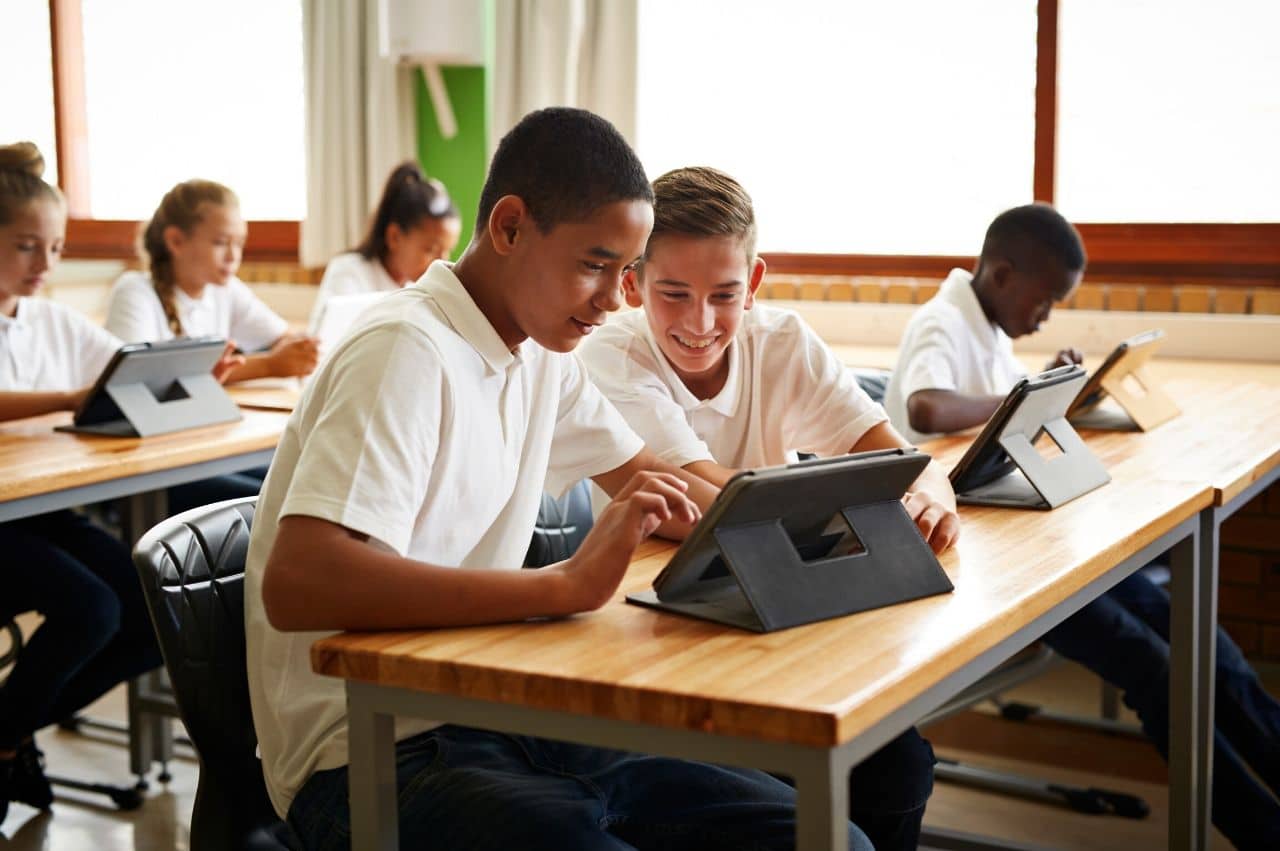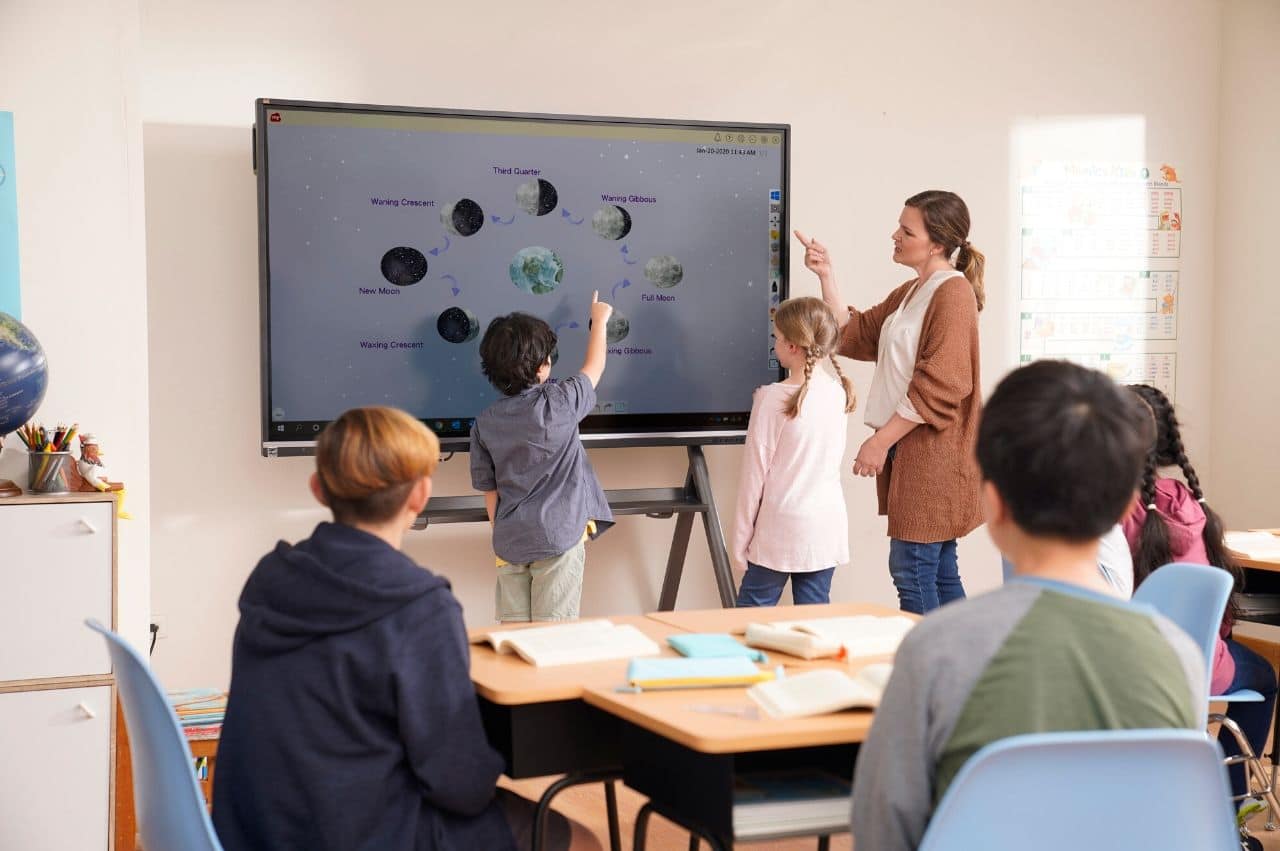A high level of student engagement is usually regarded as an indicator of success within the teaching profession. However, actually generating this kind of engagement can be challenging within the modern classroom. This task is also made more complicated by the fact that student engagement can be measured in different ways and the concept itself does not have a single, universally accepted definition.
Continue reading to learn about student engagement within the modern classroom and how it is most commonly defined. In addition, you will find out about key metrics and the various engagement strategies and activities that educators can use.
Achieving a high level of student engagement is essential for academic success and teaching excellence. After all, students are far more likely to retain valuable information and develop a meaningful and rounded knowledge of a subject or topic if they feel the lessons are interesting, entertaining, useful, meaningful and important to them.
Of course, actually generating this kind of student engagement in the modern classroom requires the use of both the right student engagement strategies and the right student engagement activities. These elements, combined with a skilled teacher, can help to ensure students are able to maintain concentration and emotionally invest in their own learning, ultimately improving learning outcomes and making lessons far more valuable.
 What is Student Engagement?
What is Student Engagement?
Student engagement is broadly seen as one of the key requirements and indicators of high-quality teaching, but finding a simple one-line definition is challenging, as it is influenced by a number of different factors and made up of a number of different components. With that being said, the Glossary of Education Reform defines it as: “the degree of attention, curiosity, interest, optimism, and passion that students show when they are learning or being taught.”
It could be said that student engagement has only been achieved when students not only take part in learning activities but become invested in their own learning. This may include factors like attendance, participation in classroom activities, emotional engagement, their level of motivation and the extent to which they take ownership of their own learning experience. It can also include elements like having a sense of belonging and purpose.
A student who is fully engaged will make a clear attempt to learn, will take an active interest in the topic, and will display a desire to fully understand it. This will go beyond what is required from them in order to pass an exam or complete a particular assignment. Student engagement can be contrasted with the idea of student disengagement. This is primarily characterized by a lack of motivation, a lack of interest in the material, limited participation in classroom activities, and/or evidence of academic self-sabotage.

Student Engagement Strategies
There are a number of different student engagement strategies that teachers are able to use, in order to increase interest, participation and overall enjoyment of their lessons. Some of the most popular and significant student engagement strategies are outlined below:
Active Learning
The concept of active learning is focused on involving students in the learning process through meaningful activities, which help them to actually think about what they are doing and why. The idea is to provide students with the chance to really take part in the lesson.
For example, students may be asked to apply theoretical learning to a real-world situation or a simulation, or to demonstrate a process in front of the class. Active learning could also involve conducting an experiment, carrying out field research, and a variety of other activities that go beyond what might be expected in a traditional classroom or lecture theater.
It represents a break from the more conventional and classic approach to teaching, which tends to expect students to passively listen to information and retain it for future use.
Classroom Technology
The introduction of classroom technology into learning environments can assist with engagement in a number of ways. One of the major benefits is the ability to create lessons that use varied content, from slideshow presentations to videos and even virtual reality.
Aside from helping to mix lessons up, in order to avoid loss of concentration, the use of EdTech can serve to speed up the delivery of content and help cater for students who have different learning styles or preferences. Interactive whiteboard technology and immersive technology can also help students to become more directly involved in their own learning.
Gamification
Another strategy used to boost student engagement is gamification, which involves the use of game playing elements, game design principles or game features in educational contexts. The idea here is to make learning more enjoyable and memorable for students, increasing the chances that they will take an interest and remember the information delivered to them.
The introduction of games into the classroom can also help to challenge students, introduce an element of competition, encourage teamwork and make lessons stand out from ones that are based on a more conventional, lecture-based approach to teaching. Meanwhile, research suggests that esports in schools can improve attendance and emotional engagement.

Collaborative Learning
Collaborative or cooperative learning is a student engagement strategy that is based around the idea of teamwork. Students can be arranged into pairs, small groups, or even much larger groups, with the premise being that they should work together to achieve their learning objectives, or to achieve things that may be difficult to achieve individually.
Examples of some of the activities that could fall under the collaborative learning umbrella include problem-solving activities, experiments, presentations, and debates. These methods can work to enhance the social aspect of learning, provide students with a sense of belonging, and help to develop skills related to communication, delegation, and compromise.
Student Engagement Activities
Within these student engagement strategies, there are some more specific activities that can be called upon, in order to improve the quality of teaching and to raise the level of interest and commitment from students. These include the following:
Digital Whiteboarding
Digital whiteboards are a form of classroom technology that has helped to bring whiteboard functionality into the modern age. Modern digital whiteboarding software solutions are able to combine the traditional functions of a whiteboard with computer-style benefits, such as the ability to undo actions, clear the board instantly, or integrate images, videos, and music.
Slideshow presentations can be displayed and operated easily, with annotations and other overlays added in real-time. Additionally, the whiteboarding software can be easily used by both students and teachers alike. One of the recent trends in this area, which can boost student engagement further, is the rise of touch screens in place of projector-based boards.
Learn more about engaged students with digital whiteboarding.
Video-Assisted Learning
The emergence of video-assisted learning has helped to make lessons more entertaining, while also providing a much-needed change of pace in classes that may otherwise rely on lectures or the reading of textbooks. Video content can concisely explain points and can provide visual and audio aids. It can also help to make some lessons more memorable.
When it is combined with digital whiteboarding and similar EdTech, video-assisted learning can become a fully interactive experience. On top of this, the use of videos to teach students about certain topics can serve to free up some of a teacher’s time during lessons, enabling them to offer valuable one-to-one support for the students who are most in need of it.
Learn more about video-assisted learning for student engagement.
Role-Playing
The intention behind role-playing activities is for students to take on the role of a person in a particular setting or situation, and act accordingly, with a view to improving their knowledge of the topic in question. It is more likely to be relevant to students in high school and beyond, because it often requires them to be able to understand complex situations and contexts.
Role-playing can be combined with activities like initial research, group planning and wider classroom discussions, to form a fully rounded understanding and ensure all students are involved. It serves as a form of active learning, and helps to develop communication skills.
Microlearning
Students can have relatively short attention spans, which can make engagement harder to achieve with longer lessons. While the idea of microlearning is primarily associated with eLearning, the basic premise also applies to classroom situations, with lessons and learning processes being broken down into smaller, more manageable units or chunks.
To provide an example, breaking down 90 minutes’ worth of content into six sections, each taught in a slightly different way and each lasting for around 15 minutes, can help to make it the whole lesson easier to digest. It can also give students the opportunity to process what they have learned along the way, rather than attempting to piece it all together at the end, when their attention may have drifted at certain points.
Not only can this help to keep students engaged for the whole duration of the lesson, but it can also boost knowledge retention and long-term academic achievement.

Measuring Student Engagement
In the past, one of the big challenges that educators faced when trying to improve student engagement was actually measuring engagement, as well as improvements to engagement levels. However, our ability to accurately monitor and measure student engagement has improved significantly in more recent years, and the following methods can play a key role:
Student Engagement Surveys
A student engagement survey is a kind of lesson or course evaluation. It can be carried out in writing, or digitally on a multiple-choice basis, and provides students with the opportunity to evaluate teaching effectiveness and the extent of their own engagement with the material.
On one hand, student engagement surveys provide a means of obtaining the real views of students, directly from them, eliminating guesswork. Nevertheless, there are also significant drawbacks to student engagement surveys too, with students potentially providing more positive responses for teachers whose personalities they like, regardless of the quality of their teaching. Meanwhile, the process can also be affected by other prejudices too.
Machine Learning
The rise of machine learning is also helping to transform the way student engagement is measured, potentially helping to eliminate some of the limitations of self-reporting. Engagement can be tracked in a number of different ways, from monitoring attendance and exam performance to monitoring how much time students are active on a computer, and even introducing elements of self-reporting through audience response systems.
Regardless of metrics, the data can be fed into the cloud and, using machine learning, conclusions can be drawn about the level of engagement for that class and how it compares to other similar classes. This allows for more timely intervention to make improvements.
Facial Expression Recognition
One of the most fascinating ways in which modern technology is being used to measure student engagement is through facial expression recognition. Using cameras placed in classrooms, combined with machine learning capabilities, it becomes possible to recognize students’ faces and their expressions and use this to track engagement levels.
So, for example, the technology could determine whether somebody looks interested, excited or happy, as well as whether they look bored, distracted, or confused.
Information can then be collected across lessons, across educational departments, and even across different academic institutions, with a score being allocated based on the level of engagement achieved. This then allows problems with engagement to be identified on a class-by-class basis, making it significantly easier to make adjustments to teaching.
Direct Observation
A less precise way of measuring engagement comes in the form of direct observation, which can be carried out either by the teacher, or by an outside figure. Generally, the aim will be to look out for classic signs of student engagement, such as:
- Students facing the front of the classroom, and looking at the board.
- Students paying attention to the teacher when they are talking.
- Students taking notes or doing the assigned tasks at the right moment.
- Students asking questions, giving answers, and contributing to discussions.
At the same time, it will involve looking out for signs of disengagement, like students talking to friends, looking around the room, fidgeting and displaying a reluctance to get involved in discussions. Although direct observation makes precise measurement difficult, it allows educators to detect obvious problems that may not show up in self-reporting surveys.

Final Thoughts
The importance of achieving a high level of student engagement is difficult to overstate, as it is effectively a prerequisite for teaching to be regarded as successful. Students who are disengaged are far less likely to retain information, form a rounded knowledge of the topic at hand, and achieve their full potential when it comes to exams or assignments.
Student engagement can be measured in a number of different ways, and doing so is important, as this can help teachers to compare lessons, courses, and approaches, and make adjustments to improve engagement levels. However, student engagement can only be achieved when students are emotionally invested in their own learning and take an active interest in it, which requires educators to use the right student engagement strategies.
Take a look at how technology helps engage students here. Or learn more about ViewSonic’s education solutions for engaging lessons.